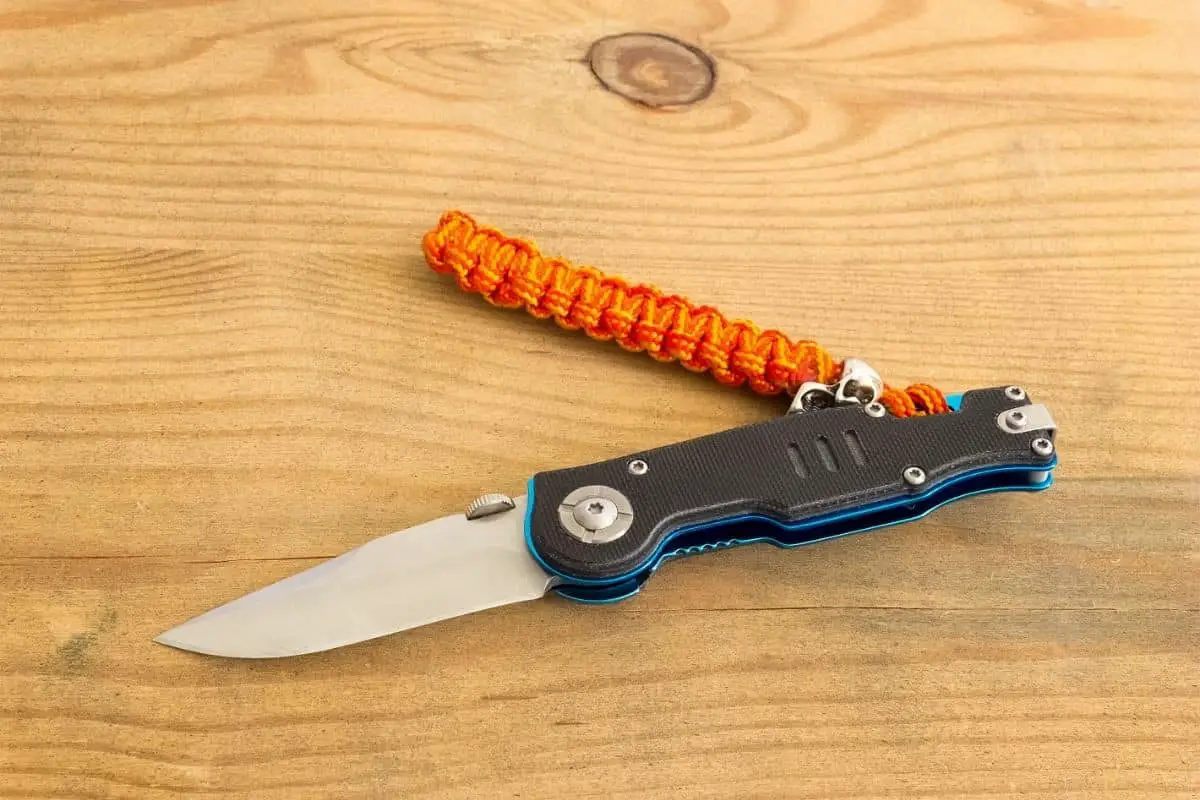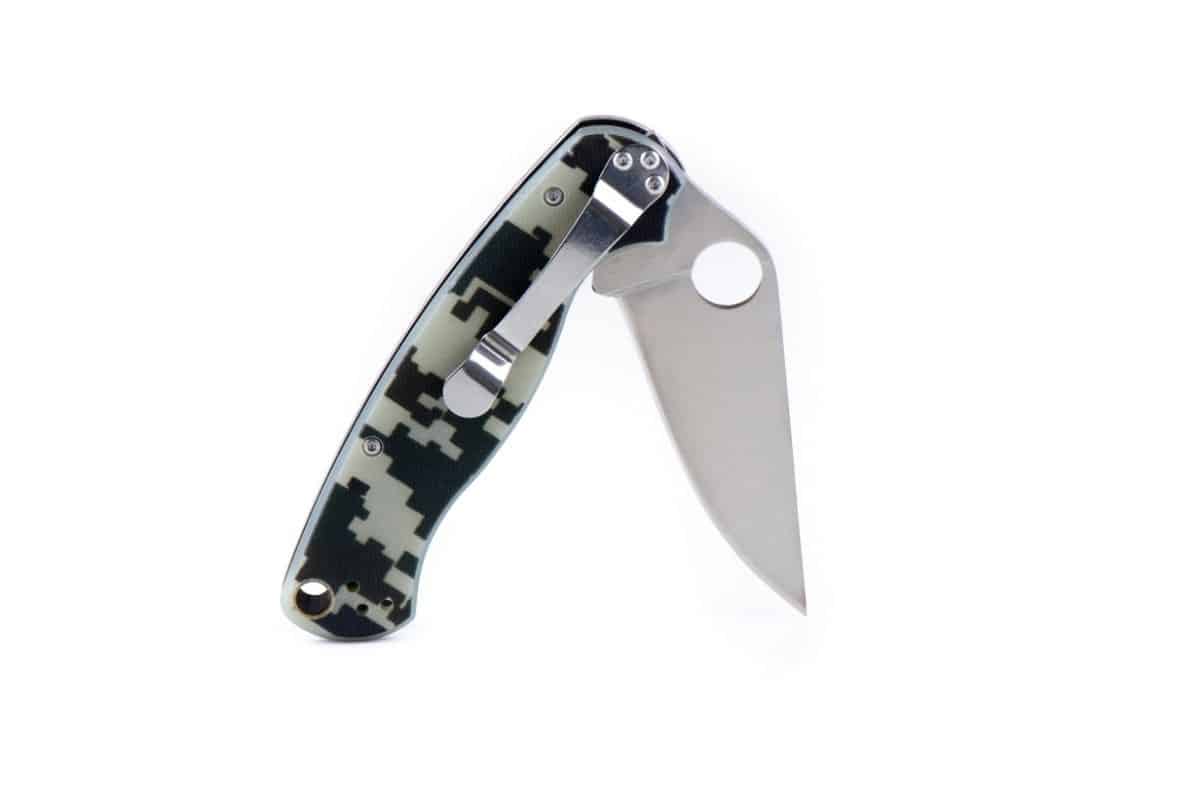
To close a pocket knife is simple, but it requires practice and patience because the blade will not reopen quickly after being closed.
The best way to do this is by using a sharpening stone on the flat of the blade or steel to remove any burrs.
The blade should be held at 90 degrees to your body when closing the blade.
Having the handle in one hand while pulling down with the thumb of that same hand also helps keep the edge from opening accidentally.
When finished pulling down, place the knife back into its original position and slide the blade back through the slot in the handle. You can now use the knife as before.
How To Choose The Right Pocket Knife For You
Choosing the right knife for yourself depends upon what you want to accomplish with the knife.
If you’re just starting out with knives, try to get an inexpensive model first. Then, as you become more familiar with them, you’ll be able to tell which ones work better than others. Then you can choose a more expensive knife if you really like it.
There are several different knives available; they range from folding knives to fixed blades. If you plan to carry a knife on your person, a pocket knife gives you more excellent options for moving the knife.
Other things to consider include:
- the size of the blade
- blade type (fixed or folding)
- sheath type (folding or fixed)
- handle size
- weight
- blade material
- the material used for the sheath
For example:
A larger blade generally means a heavier knife. And a giant knife usually weighs more than a smaller one.
Folding knives usually weigh less than their open-bladed counterparts. This is because the folded blade fits inside the folder. However, when fully opened, the edge extends beyond the point of the folder.
Knives made of carbon steel are more robust than stainless steel. This is because carbon steel tends to retain its strength over time, whereas stainless steel loses some of its hardness after years of use.
Carbon steel also has a more excellent feel in your hands than stainless steel. It’s easier to sharpen, too.
In addition to having a sharper edge, stainless steel is softer than carbon steel. This is because more delicate materials feel smoother to the touch and are easier to control.
But stainless steel doesn’t last forever either. Eventually, the edge becomes dull. At that point, stainless steel knives require re-sharpening.
Both materials provide good cutting performance. One advantage of stainless steel is the resistance to rusting. Unlike carbon steel, stainless steel won’t rust if it comes in contact with moisture.
Stainless steel retains its sharpness longer than carbon steel, so it’s recommended for people who don’t carry their knives often. However, stainless steel knives tend to lose their edge faster than carbon steel knives.
In general, most knives come with plastic handles. Plastic is cheap and easy to mold but hardens when exposed to heat.
Consequently, plastic can crack or break. Unfortunately, there’s no way to repair this damage without replacing the whole handle.
Plastic handles also wear out quickly. In addition, they could scratch your hand or fingers while using the knife, causing discomfort.
Many knives sold today feature wood or leather sheaths. Leather holds up well against scuffs and scratches, plus it provides an excellent grip.
Wood handles resist corrosion, but they’re not perfect. Sometimes there will be splinters or nicks, and any wood handle will eventually warp over time.

The best thing about wooden handles is that they look great. No matter which kind you pick, keep in mind that a knife should fit comfortably in your hand.
How To Stay Safe Using A Pocket Knife
To stay safe, follow these precautions:
- Keep your knife locked in its sheath unless you’re at home or in an area where you know your property isn’t being watched by security cameras.
- Never leave a knife unattended.
- If you must leave your knife behind, put it in a difficult place to reach until you return.
- Don’t let anyone else near your knife.
- Make sure the knife is secure in its sheath.
- When you’re finished using the knife, make sure that the blade is completely covered.
- Avoid making cuts on your skin.
How To Choose A Pocket Knife
Choosing a pocket knife depends mainly on what you intend to do with it. You’ll probably find that some designs are better suited for specific tasks.
For instance, a large pocket knife may work well for opening boxes, while a smaller model works better for slicing through paper.
You might also consider the type of material used to make the handle. For example, some blades require special care because they can rust over time. Look for sheaths made of stainless steel or titanium to prevent this problem.
Another factor you should take into account is the size of your hands. Unless you plan on carrying the knife in a small pouch strapped to your belt, most people will prefer a larger blade. But remember that larger blades are heavier.
Pocket Knife Safety Tips Before You Open One Up
Before you open a new knife, read safety instructions carefully. You do not open a knife without first flushing out the dirt inside the blade.
Flushing the edge helps remove bacteria that could cause food poisoning or infection.
Conclusion
A pocket knife is a valuable tool, especially during DIY projects. Ensure that you know how to correctly use a pocket knife before handling one.
This ensures you don’t hurt yourself or anyone around you. Pocket knives should be respected and handled with care.
It’s unsafe to handle one if you are a child or are at risk to yourself or others. For more handy information about similar topics, check out the rest of our blog.

